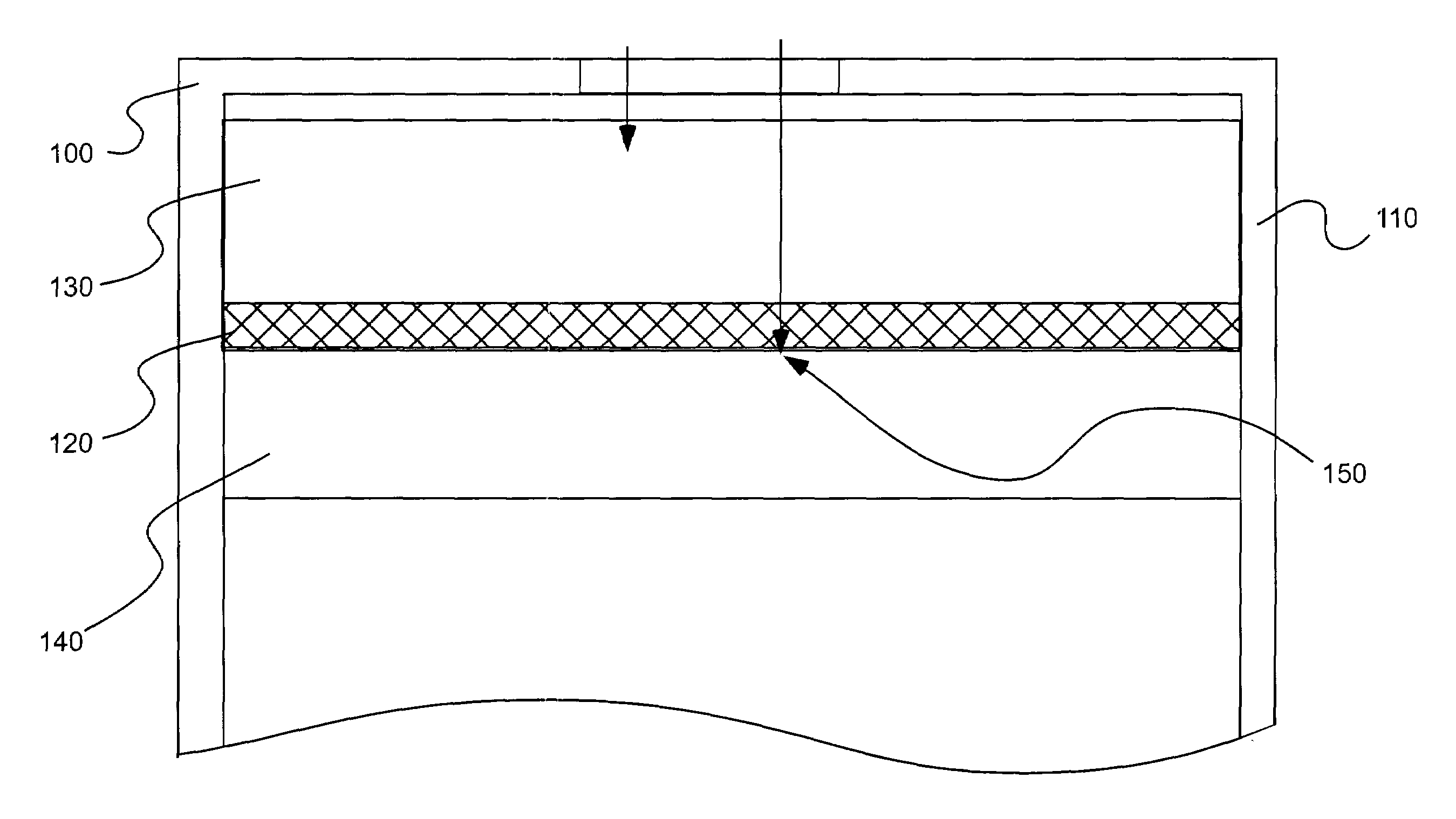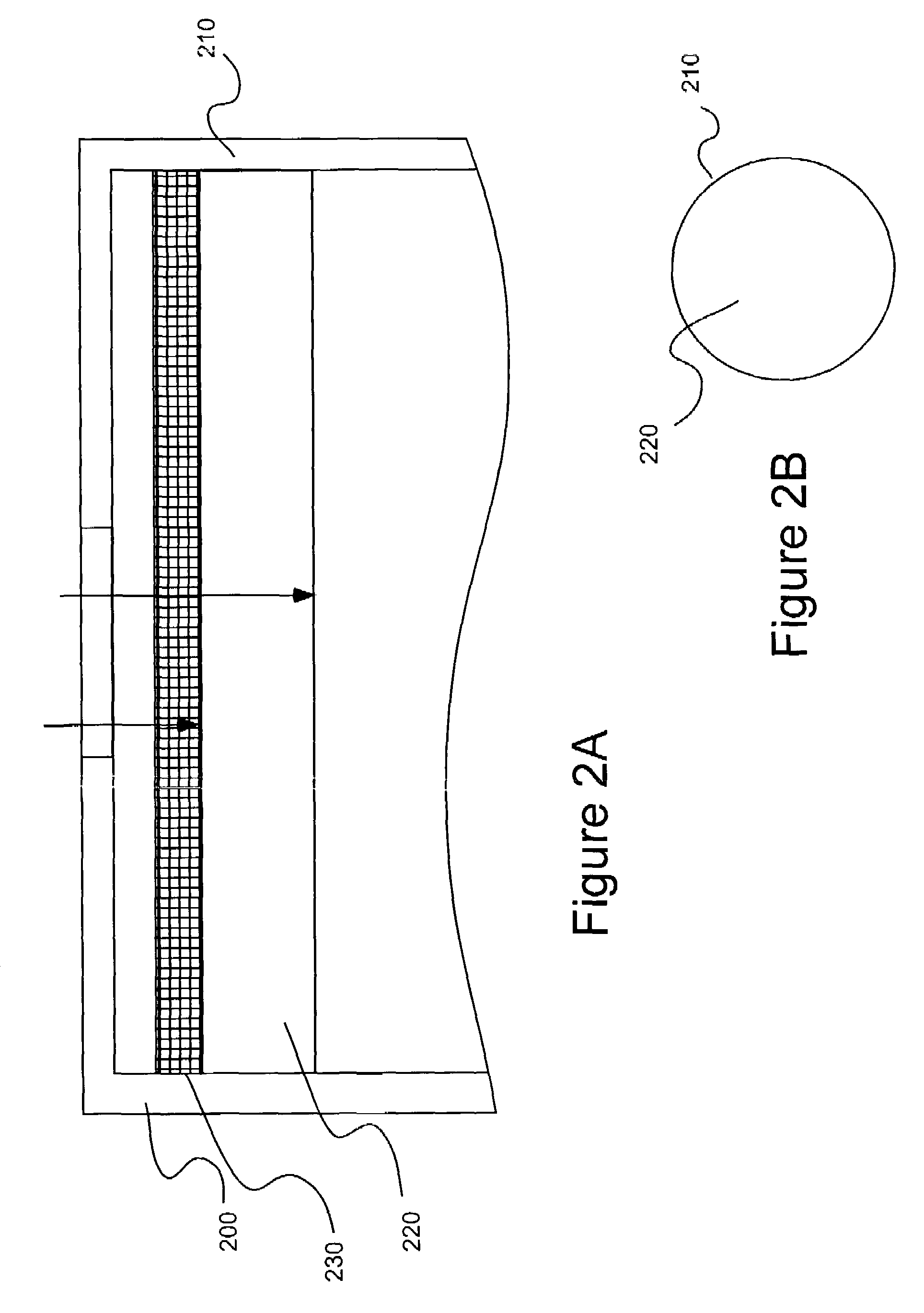Electrochemical sensor
- Summary
- Abstract
- Description
- Claims
- Application Information
AI Technical Summary
Benefits of technology
Problems solved by technology
Method used
Image
Examples
experimental examples
[0049]A number of electrodes as illustrated in FIGS. 3A and 3B were tested for various analyte gases using various electrode catalysts in a two-electrode sensor configuration as summarized in Table 1. The catalysts used in the studies of the present invention are further characterized in Table 2.
[0050]
TABLE 1AnalyteActive CatalystActive CatalystBiasGasWorking ElectrodeCounter ElectrodePotentialH2SIridiumIridium0mVCOPlatinumPlatinum0mVNO2Activated CarbonActivated Carbon0mVSO2GoldPlatinum0mVNOCarbonPlatinum+300mVNH3IridiumIridium+235mV
[0051]
TABLE 2Surface Area,CatalystManufacturerm2 / gSensorIridiumEnglehard15.5–21.5H2SPlatinumEnglehard>25CO, SO2, NOActivated CarbonJohnson MattheyNot AvailableNO2 (75%)Carbon BlackCabot94NO2 (25%)(Regal 330R)GoldTechnic Inc.0.4–1.0SO2GraphiteSigri Great LakesNot AvailableNO(EG-31)Carbon Co.
Each of the sensors studied included a working and counter electrode as described above. In forming the bi-layer electrodes, the electrolyte was H2SO4, the high-surfac...
PUM
 Login to View More
Login to View More Abstract
Description
Claims
Application Information
 Login to View More
Login to View More - R&D
- Intellectual Property
- Life Sciences
- Materials
- Tech Scout
- Unparalleled Data Quality
- Higher Quality Content
- 60% Fewer Hallucinations
Browse by: Latest US Patents, China's latest patents, Technical Efficacy Thesaurus, Application Domain, Technology Topic, Popular Technical Reports.
© 2025 PatSnap. All rights reserved.Legal|Privacy policy|Modern Slavery Act Transparency Statement|Sitemap|About US| Contact US: help@patsnap.com



